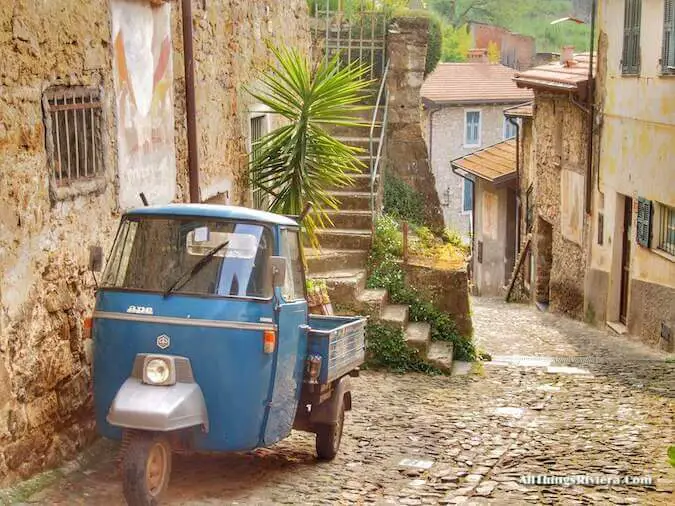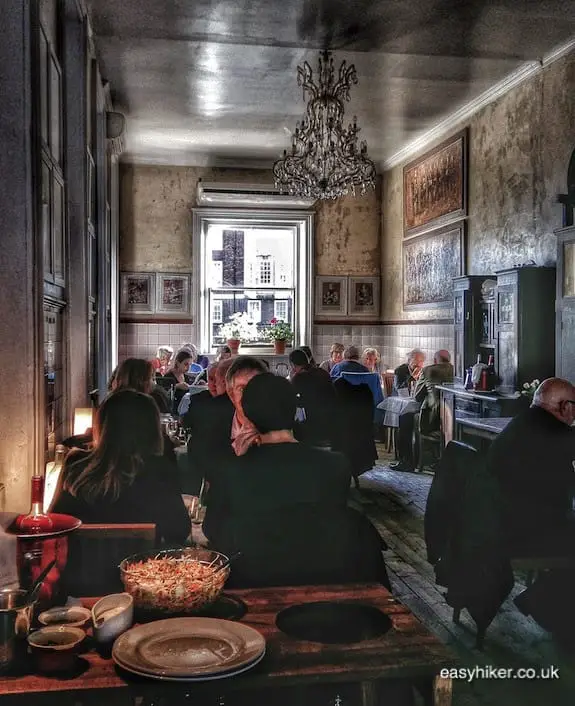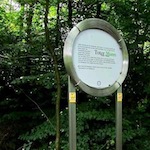The town of Aveiro, roughly an hour away from Porto by train, is a favourite daytrip destination for visitors of Portugal’s second city.
Aveiro has become a busy tourist town mainly on the strength of two attractions – firstly, a network of urban canals, which is also the reason why the town is frequently called “the Venice of Portugal”.

One can certainly see where the comparison comes from – and where Aveiro falls short (inevitably: what city on Earth can rival Venice?), it makes this up with other qualities. Its canal bridges may not wear the patina of a glorious 1000-year-long history, but colourful ribbons fill the air with the gaiety of a children’s birthday party …

… and the houses that are lining the canal may not be able to rival the waterfront of La Serenissima, but are handsome enough to lend the scene a downscaled, more soft-spoken type of urban grandeur.

And here is another parallel: just like in Venice, most visitors will take a ride on a canal boat on its version of Venetian canals.

In the days before tourism, fishermen used these Barcos Moliceros to collect seaweed along the near-by Atlantic coast. Traditionally, the boats were decorated with images of saints, presumably in the hope that this would ward off the perils of the sea.
Today, they quite frequently carry the portraits of people whose skill set does not include the provision of support in the middle of a raging storm.

Such a boat tour in Aveiro’s Venetian Canals is not a must: you can see as much by just strolling along the footpaths that line the banks, since the canals do not really form a complex network but more of an easily walkable small circle.
On top of that, this circle is fairly unattractive and industrial on its northern periphery, so you can safely skip that bit and concentrate on the lower half of the ring.

Aveiro’s second attraction is the coastal lagoon on its western side, particularly the fishing village of Costa Nova.
Costa Nova is famous for its waterfront row of quaint and colourful houses, the so-called Palheiros, which were originally built by the local fishermen to store their equipment but have since acquired a “second life” as popular Instagram motives.

Costa Nova is several kilometres away from Aveiro’s town centre, too long a distance for a walk, so you must take a bus.
Line no. 36 will take you there from a central bus stop opposite the ornate building of the Royal School Of Languages on the canal promenade. (You can buy your tickets directly from the driver.)
The ride takes approx. 45 minutes, so you better see it as part of the fun and keep your eyes open for things to discover along the way. The bus will take you through the non-touristy parts of the town, where most of the locals that you see in the city streets are presumably living, and past the industrial harbour – all this is interesting rather than pretty – before crossing the bridge on to the Costa Nova peninsula.
Early on, in Aveiro’s outer suburbs, you will also pass the seawater condensation ponds: this way of producing salt was once a big part of the local economy.

Costa Nova lies on a narrow strip of land between two bodies of water: the relatively small lagoon that is lined by the striped houses and the somewhat larger Atlantic Ocean.
Stroll down the lagoon promenade where you can find everything you would expect to see in a southern European beach resort (cafés, souvenir shops, a small marina) as well as some things that you would not – such as this former bus stop with its extravagantly cantilevered roof. (Or is it an alien spaceship, stranded in the unlikeliest of places?)

You will also find many good fish restaurants (we suggest you take an early train from Porto to make it here in time for lunch) …

… and, on the western side of the narrow peninsula, a long sandy beach that is lined by a 6 km long elevated walkway. This allows you to have a stroll without having to wade through ankle-deep sand.

A walk down the coast is a unique experience late in the year, when, essentially, this is a one-on-one encounter between you and the vastness of the Atlantic Ocean. You will never see a beach as empty as that on a sunny day in Southern France or Italy – a reminder that this is not the tender and merciful Mediterranean but something altogether rougher, darker and a good deal more savage.

After that, it’s back to Aveiro for a coffee and a taste of the local specialty, called Ovos Moles, essentially sugar-coated egg yolks. The best ones, so they say, are served at the Confeitaria Peixinho (on 9 Rua do Coimbra in the town centre).
Once you have finished that assignment (I know: it’s a hard life), there are two more things on your to-do-list before returning to Porto: first, you should sample the local street life – Aveiro is a well-kept and handsome town. Look around you, but also at what is under your feet.

These ornamental pavement stones are apparently a Portuguese tradition. Porto has them too, but largely laid out in abstract patterns and nowhere near as fancy as this.
Aveiro offers a whole catalogue of maritime motives: boats, water deities, animals, all depicted in the blue-and-white palette of the sea, and walking through town can feel like walking on the sea floor.
And finally, just before you enter the train station, take a look – if you have not done so straight after your arrival – at the old train station that still stands right next to its modern successor. It is decorated with tiles that tell the history of the town, celebrate its landscapes and prominent citizens, remind people of how their grandparents lived and what the city looked like at the time. It is impossible to take all of it in in a few minutes before the departure of your outbound train.
Perhaps this is Aveiro’s way of saying: if you want to see all there is to see here, you must come back some other day.







